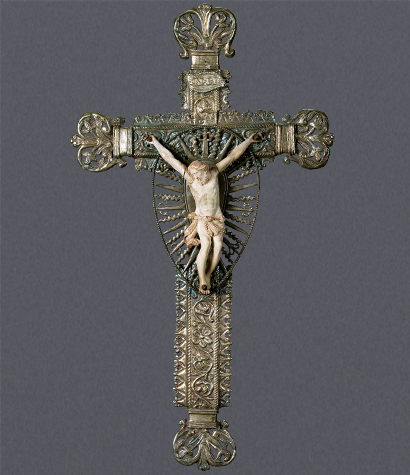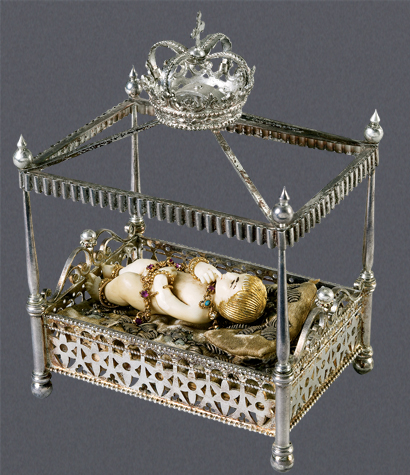
This elegant gilt silver monstrance from the early 20th century is elaborately engraved all over with vegetal and other motifs. Its circular base stands on feet in the form of plant coils, which alternate with chiselled shell and plant designs. The long stem is patterned with stylized palm fronds at the base, and includes two flattened spheres: the smaller one is plain while the larger is more intricately worked with geometric and plant patterns. The circular ostensory sits on top, supported at front by a full-fledged standing angel with arms raised; its central frame has two concentric decorated friezes with pearl motifs. The sun’s rays, straight alternating with wavy, are marked by wheat-ear motifs, alluding to the sacred bread of the Mass, interspersed with fleur-de-lis motifs. A Greek cross terminating in plain silver circles surmounts the whole.
The presence of an open flower among the wheat-ear motifs under the cross is a detail which indicates the piece’s probable Indian origins, as do the elaborate plant-patterned feet and shell motifs, this last a local extension of the maritime imagery of the Late Gothic Portuguese Manueline period in art (1490-1520).
PUBLICATIONS
Museum of Christian Art, Convent of Santa Monica, Goa, India, Calouste Gulbenkian Foundation, Lisbon, 2011.


















